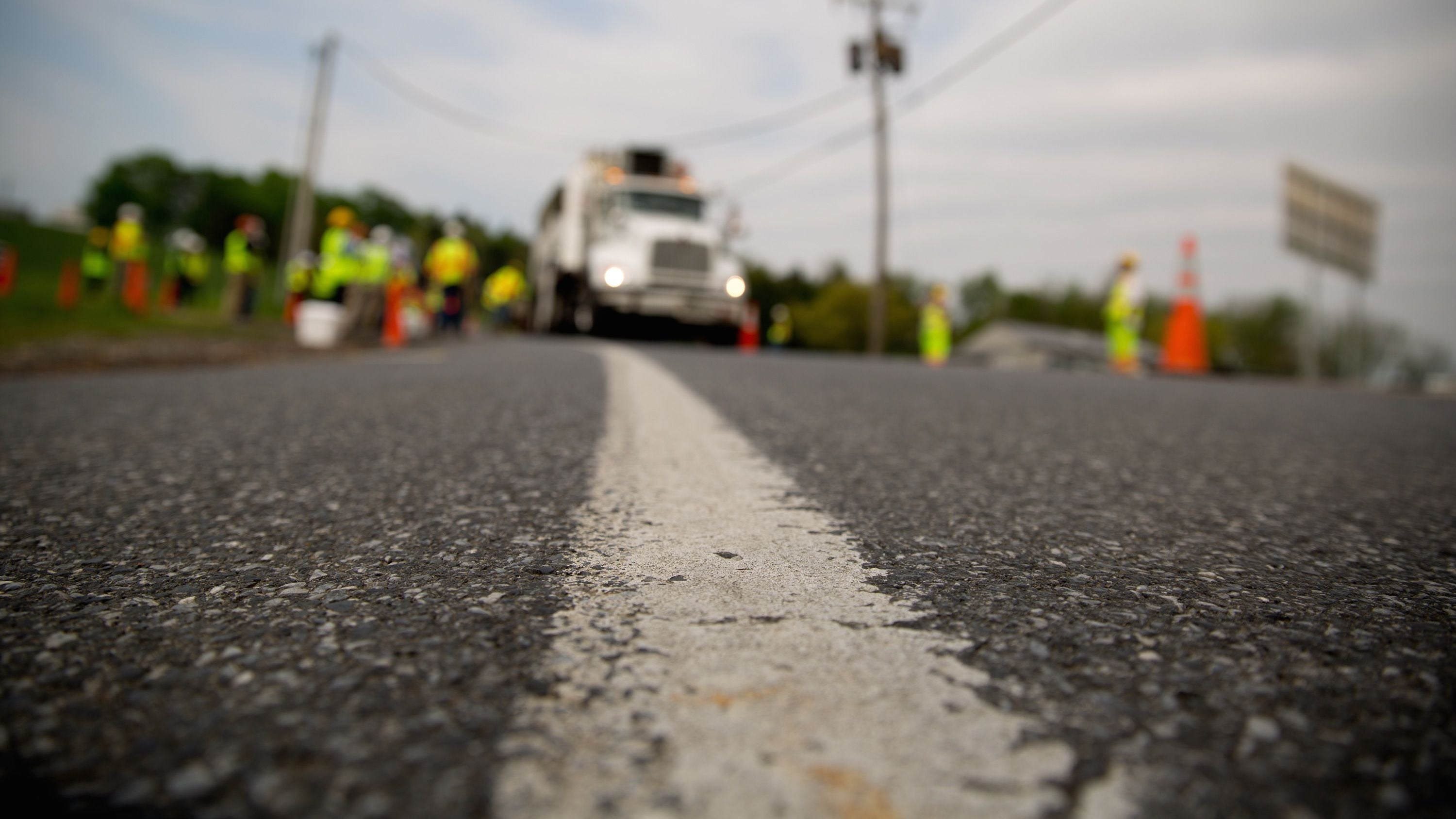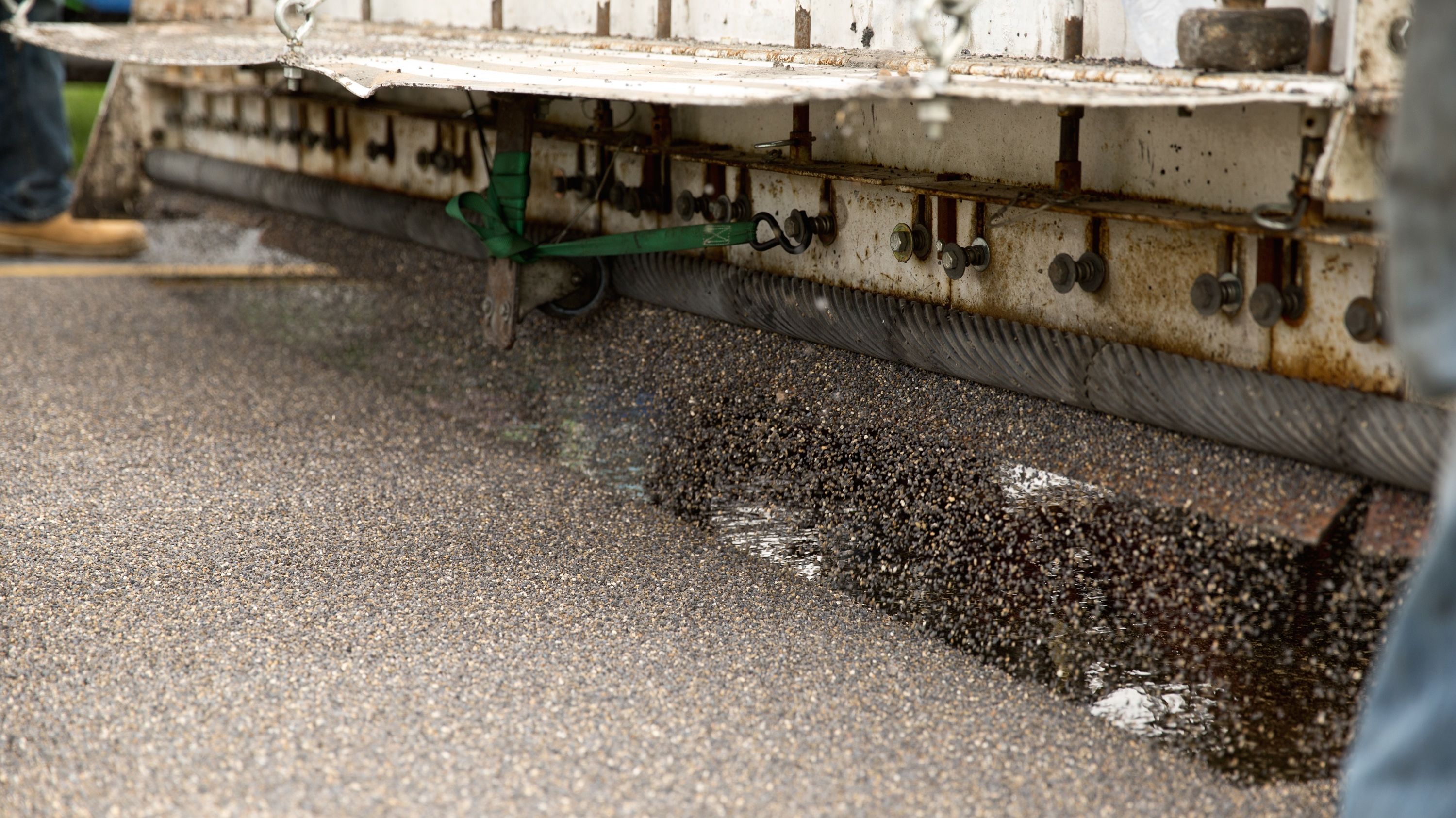Pennsylvania is making its roads less slippery

Workers apply high-friction surface treatment on Route 241 in Lebanon County. (Courtesy of PennDOT)
The agency is putting down a material that will increase friction on high-risk areas, including curves and intersections.
Pennsylvania has about 41,000 miles of state-owned roads, including major highways like the Schuylkill Expressway and the Pennsylvania Turnpike. The state also has a higher rate of roadway fatalities than the rest of the country.
Slippery and wet roads are a particular problem.
Since 2010, the state has seen nearly 200 fatalities and 500 major injuries each year because of crashes on slippery or wet pavement, according to the Pennsylvania Department of Transportation.
PennDOT has decided to do something about that. It’s putting down a material that’ll increase friction on high-risk areas of the state’s roads, including curves and intersections, where people tend to brake a lot. Over time, all that braking wears down the pavement, making it more slippery.
The material, called high-friction surface treatment, is made of tiny rocks that are high quality and wear-resistent. Those rocks stave off accidents in two ways: they stop stormwater from pooling at a road’s surface, and they prevent skidding by allowing a car’s tires to grip the road.

A machine applies the high-friction surface treatment to one of the state’s roads. (PennDOT)
In 2015 and 2016, PennDOT plans to apply the material to about 120 segments of roadway, each less than 1500 feet. It costs about $64,000 to apply the treatment to a segment of that length.
That’s a lot more expensive than other safety measures that can help prevent accidents on wet pavement. For instance, installing 10 warning signs would cost about $500. Pavement markings would be about $2,000.
But the state is putting the material on roads where lower-cost safety measures haven’t worked.
Why spend the money?
PennDOT has tested the high-friction material on about 63 spots in the state since 2007.
For its first pilot project, PennDOT applied the treatment to a 500-foot curved section of Route 611, which connects Easton with Stroudsburg in the north and Philadelphia in the south.
Over the previous decade, that curve saw 20 vehicle crashes due to wet pavement. Since the agency applied the high-friction material, there hasn’t been one wet-pavement-related accident.
The agency has seen similar results throughout the state.
PennDOT also works with universities like Penn State to come up with other ways to make its infrastructure safer, cheaper, and longer lasting.
WHYY is your source for fact-based, in-depth journalism and information. As a nonprofit organization, we rely on financial support from readers like you. Please give today.


